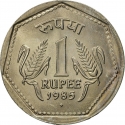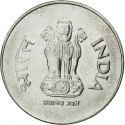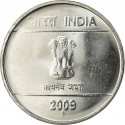You are about to finish your registration. Please check your mailbox (including spam folder). There should be a letter with a confirmation link. Check setting to make sure that your e-mail address is correct.
Send letter againDescription
Dnyaneshwar, also known as Dnyandev or Mauli (1275–1296) was a 13th-century Marathi saint, poet, philosopher and yogi of the Nath tradition whose Dnyaneshwari (a commentary on the Bhagavad Gita) and Amrutanubhav are considered to be milestones in Marathi literature.
At the age of sixteen, he wrote the “Bhavartha Deepika Teeka” (meaning a “commentary on meaning of the written word in the Bhagvad Gita”), which is popularly known as the “Dnyaneshwari”. This work is, essentially, a commentary, comprising 18 chapters, on the Bhagvad Gita (the holy book attributed to Lord Krishna, in Hinduism) written by him in the contemporary Marathi language, in verse. The importance of this exhaustive work, written by him was, that it brought the philosophy of the Gita (until then the prerogative of intellectual classes), to the common man.
The work titled “Amrutanubhav” (meaning “Experiencing the eternal or immortal” which essentially is a treatise on non-dualism) is also attributed to him and is considered to be a valuable contribution to Marathi literature. He also wrote “Changdev Paasashti” addressed to a yogi Changdev Maharaj. The “Haripath” (God’s way) and about 1000 “Abhangs” are also attributed to him.
He was considered by the “Varkaris” (“pilgrims” – of the Vaishnava or Vitthala Sampradaya – Vaishnava followers – in Hinduism) as their teacher and spiritual leader who initiated his followers into the “Advaita” philosophy (one with God) as opposed to Dualism (separate from God). He preached “jnana yukt Bhakti” (Devotion to God through knowledge).
At the age of 21, he felt that his life’s work had been completed and voluntarily attained “Samadhi” (eternal peace), in Alandi where the temple Samadhi commemorating his life is built on the banks of the Indrayani river.
Obverse

|
Depicts the State Emblem of India with Satyameva Jayate below surrounded by the country name and value. भारत INDIA |
|---|---|
Reverse

|
Depicts Sant Dnyaneshwar seated cross-legged on a low “chowki” (seat) in the manner of giving a discourse on some important issue, facing 3/4 left, surrounded by the bilingual inscription "Saint Dnyaneshwar". Date below. Mintmark under the date. संत ज्ञानेश्वर · SAINT DNYANESHWAR 1274-1296 A.D. |
| Edge |
Characteristics
| Type | Commemorative Issue (Circulating) |
| Material | Stainless Steel |
| Weight | 4.85 g |
| Diameter | 25.1 mm |
| Thickness | - |
| Shape |
|
| Alignment | Medal |
| Alt # |
|
| Mints |
Calcutta Mint (no mintmark) Mumbai Mint (♦) Noida Mint (●)
|







